Think you’ve spotted fountain grass around Adelaide? Here’s our expert tips to tell this serious pest plant apart from its look-alikes – and what to do when you see it.
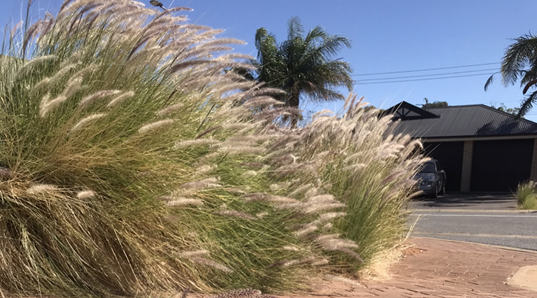
Fountain grass (Cenchrus setaceus) might look pretty, but it’s a serious weed that spreads fast, crowds out local plants, takes over gardens, and causes trouble for wildlife.
In fact, it’s what’s called a ‘declared’ weed, meaning it’s been officially labelled as a serious problem because it rapidly spreads and causes harm to nature.
Here at Green Adelaide, we control this declared weed in key areas where native species are at risk.
But we need your help too. Everyone can play a part in managing this weed – but we understand it can be tricky to ID this grass from others!
This is largely because fountain grass has a couple of look-alikes around town, which are easily confused with the declared weed – purple fountain grass (Cenchrus x advena) and swamp foxtail (Cenchrus purpurascens).
These species are non-weedy, and have their own unique look, but neither is local to South Australia.

Then there’s the other confusing element that makes it hard to identify this weed – the common name of ‘fountain grass’ is shared with other plant species that aren’t problematic. Tricky huh!
To make things a little easier when it comes to identifying the fountain grass weed that we desperately need to manage, here are 5 expert tips to help you tell it apart from other grasses and plants:
5 ways to tell if you’ve spotted weedy fountain grass
1. It spreads quickly
If you had one fountain grass plant and now you have lots more, it’s highly likely you’re dealing with the declared weed.
Fountain grass spreads fast thanks to its light, feathery seeds – they hitch rides on wind, water, animals, clothes, shoes, vehicles, and even in dumped garden waste. Once they’re on the move, it doesn’t take long for this weed to spread out quickly.
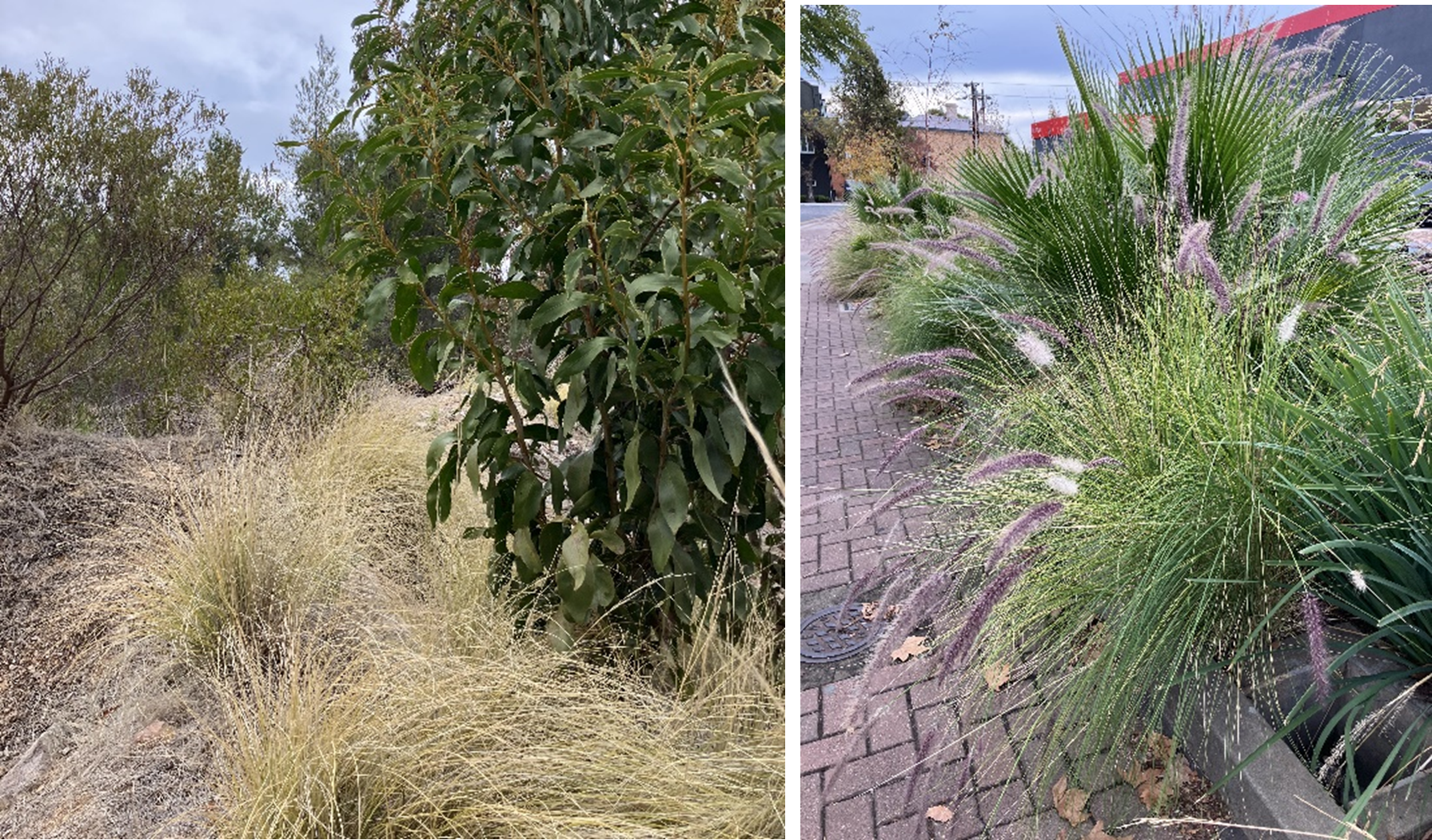
2. It has long and thin green leaves
Fountain grass has thin green leaves that are long and narrow, about 45 cm long and 0.5 cm wide. The leaves can be flat, rolled, or folded. In dry conditions, the leaves turn straw-coloured but turn green again with a little water.
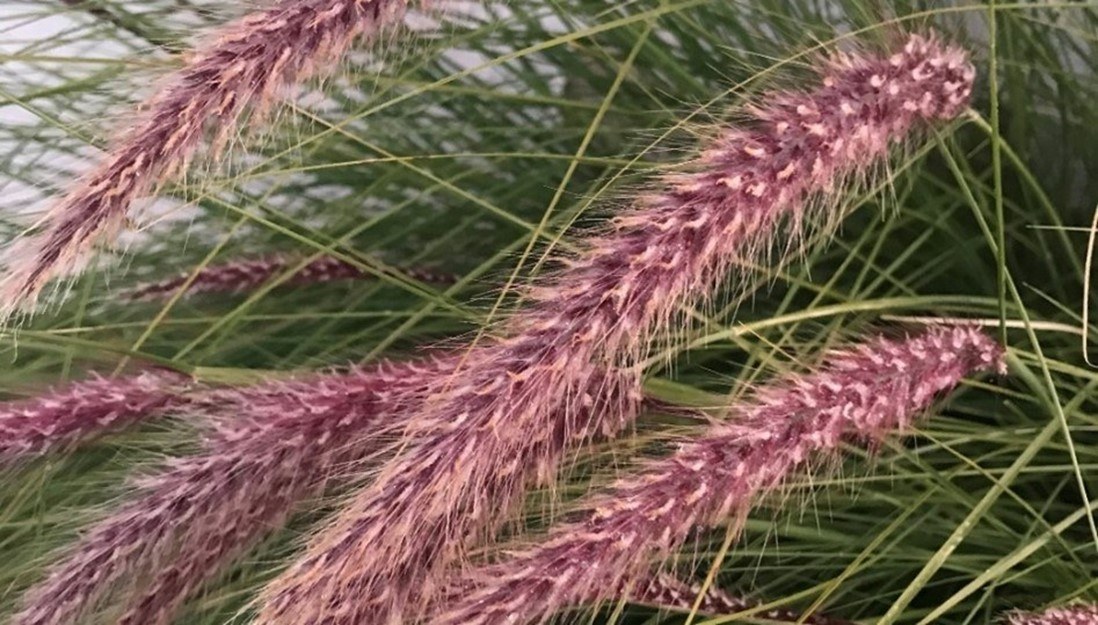
3. It has purple seed heads
The seed head (aka the flower spike) is dense and shaped like a cylinder, can be up to 25 cm long, and is purple or purplish-grey.
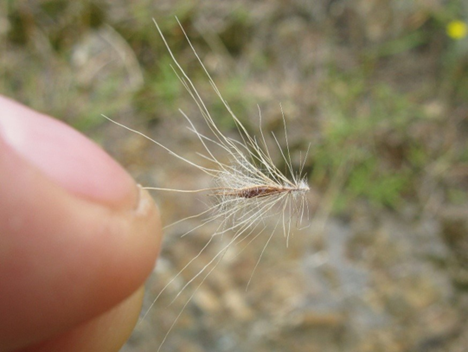
4. It has feathery hairs on soft seed bristles
The seeds themselves are surrounded by up to 25 soft bristles. These bristles have feathery hairs coming off the bottom part them. Non-weedy species don’t have this feature!
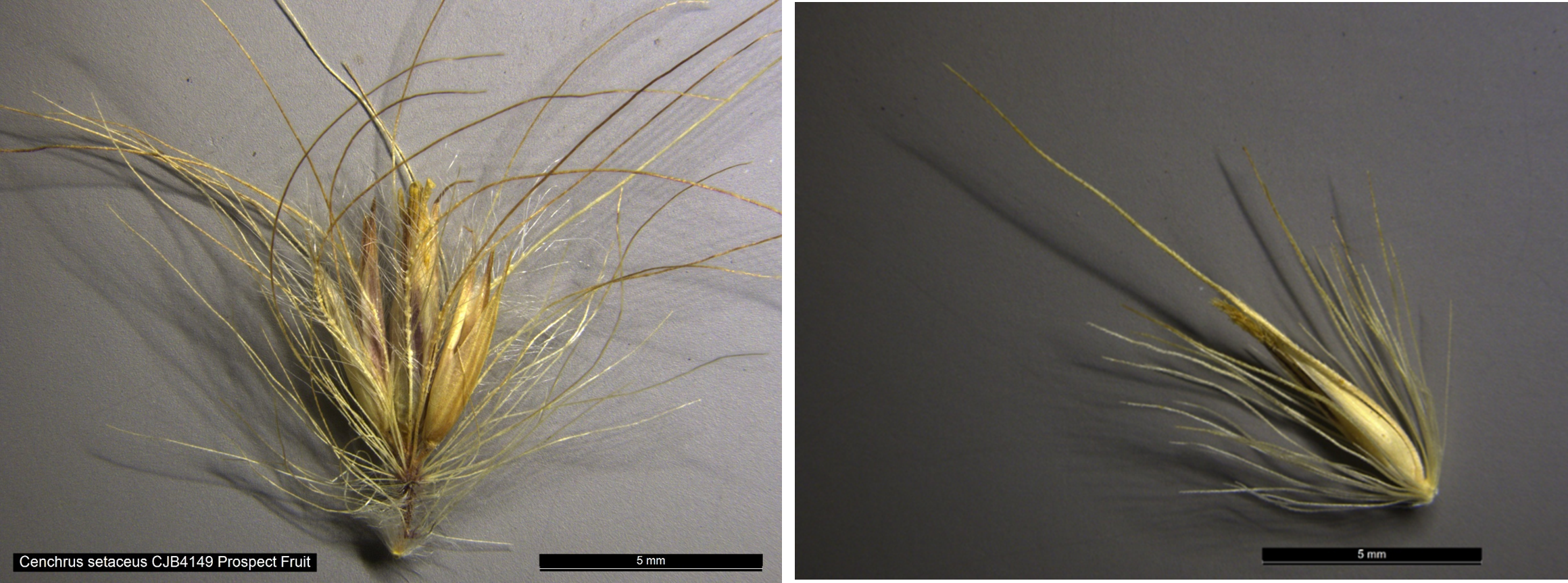
5. It’s verified by the experts
A sure-fire way to know if the plant you’re looking at is actually weedy fountain grass is to take a photo and upload it to iNaturalist, where plant experts can help you ID it.
iNaturalist is a free app where you can upload photos, and a network of experts can confirm the identity of the plant.
Be sure to capture important identifying features such as close shots of the seed heads and seeds.
What can you do if you find fountain grass?
Help remove it! Because Fountain grass is a declared weed, if you have it on your property, it’s your job to help stop it from spreading or to remove it completely.
You can do this by pulling it up manually (being careful not to let any of the seeds come loose and fly away) or removing it with chemical control.
It’s a good idea to prevent reinvasion by disposing any plants in your household. You can also mulch the bare and disturbed soil and provide competition to reinvasion by replacing the weeds that you removed with native plants.
If you want some extra detail, we’ve got some expert advice and tips on control of fountain grass and other declared weeds in our get help with weeds webpage.
Want to know more?
Find our more about this pesky weed by reading our blog on what you need to know about fountain grass, plus our feature on the top 3 threatened plants and animals impacted by it.
Breaking news: We recently nominated fountain grass (Cenchrus setaceus) as a ‘Weed of National Significance’, which is a mechanism to make ensure national coordination on its management.
The nomination is awaiting assessment. Stay-tuned for updates and what this may mean for this weed’s management across metropolitan Adelaide.